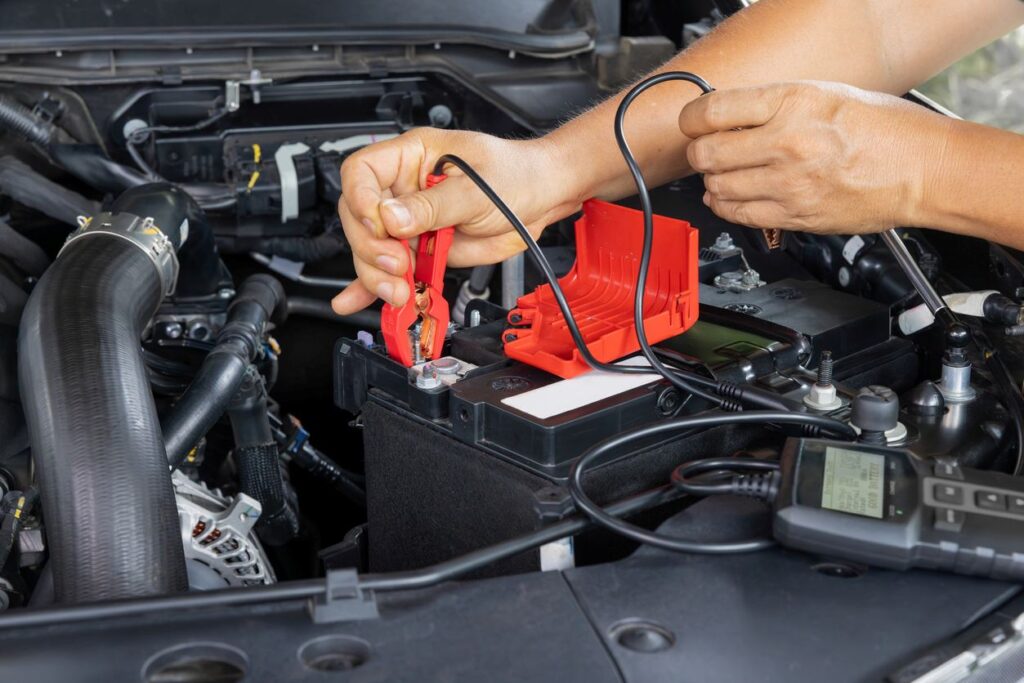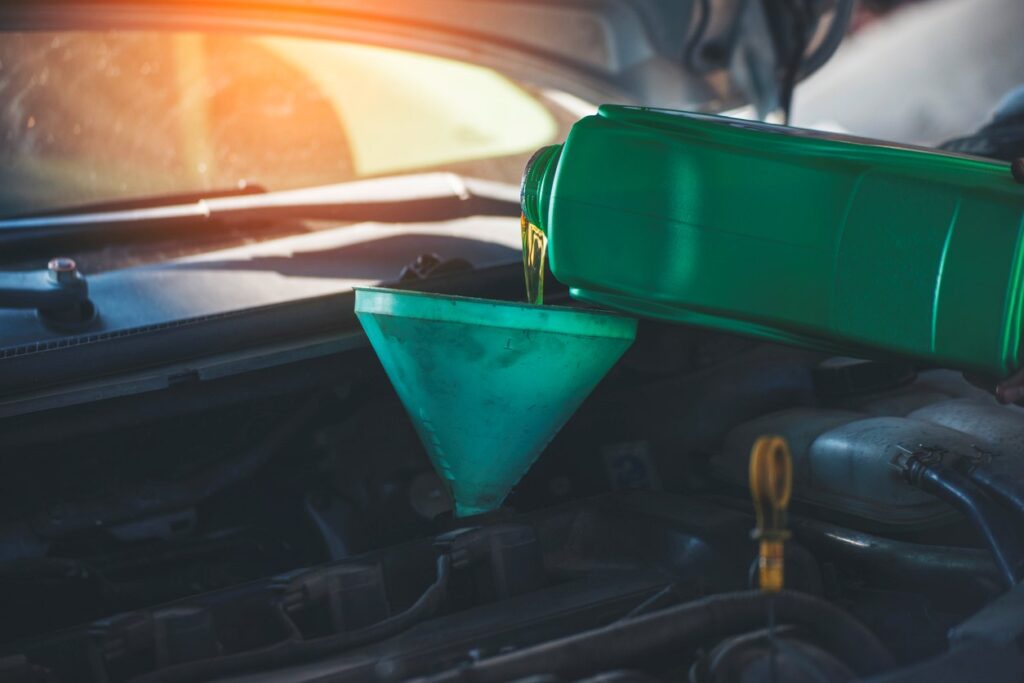As the weather begins to cool and the risk of rain, ice, and snow grows, keep your car ready for action with a little help from Kennedy Transmission. Cold snaps change how materials behave, slow down fluids, and put extra load on parts you usually don’t think about. An odd squeak, sluggish start, or fading heater you notice on a chilly morning often points to something real that needs attention before it turns into a tow.
With long nights, salted roads, and plenty of stop-and-go driving, it’s always best to stay on top of potential hazards before they become problems. Today, we’ll walk through the most common winter issues we see, what they sound and feel like, and how to spot them early.
Why Does My Car Make Noises in the Cold?
There are many factors that lead to your car making more noise in the winter, but thermal cycling plays a big role. Your engine block is made from strong alloys that tolerate heat while remaining stable after a cold soak, but not every component behaves the same.
Rubber gaskets and seals stiffen in low temperatures, losing their malleability and allowing small gaps to open up around doors, windows, valve covers, and even the oil pan. That leads to wind noise, whistling, and little rattles that weren’t there in October. The same stiffness affects the rubber boot around your CV axle, which can start to click or chirp as it flexes, and it causes the wiper blades to chatter across the glass instead of gliding smoothly.
More Automotive Noise Makers
Plastics react, too—modern interiors, especially in budget-friendly models, use more plastic trim. In the cold, those panels contract. Tiny gaps appear, and as the cabin warms up unevenly, they expand again. That cycle sets off creaks, pops, and groans as you drive over bumps or through a parking ramp.
Exterior splash shields, wheel-well liners, and underbody panels can also warp or loosen in the cold. These noises aren’t pleasant, and some hint at parts that may crack or leak if ignored.
Common Car Engine Problems in the Winter
When temperatures drop, engine oil gets thicker, or more viscous, which slows circulation on cold starts. Until oil warms and thins out, it takes longer to reach bearings, camshafts, and turbochargers. That extra friction means extra wear can occur during the first minutes after starting.
Using a synthetic oil that meets your vehicle’s specifications and winter grade, such as a 0W- or 5W- rating when appropriate, can help the pump move oil quickly through tight passages. This allows parts to stay protected on frigid mornings.
Engine Oil and Cold Weather Performance
Another frequent winter trouble spot is the thermostat. Yes, the part that measures and controls temperature can be damaged by the temperature. This small valve regulates coolant flow, helping the engine reach and maintain its ideal operating temperature. If a thermostat sticks open in winter, coolant constantly circulates through the radiator, shedding heat too quickly.
The engine runs cool, fuel economy drops, the check engine light may appear, and the cabin heat can feel weak. If it sticks closed, the engine can overheat even in January. Both failures are common enough that we test thermostats often during winter inspections.
Car Battery Problems, Alternator Issues, and How To Identify Them

Think your alternator died? You might be in luck. Many alternator failures turn out to be tired batteries, which is a far simpler and less expensive fix. A weak battery struggles on cold starts, then seems fine after a long drive.
An alternator problem manifests differently: the battery light may glow, lights dim with engine speed, accessories act erratically, and the car can stall once the battery drains because the alternator isn’t replenishing it. If you start the car and the voltage across the battery while idling never rises into the normal charging range, that points toward charging trouble. If the voltage is fine while running, but cranking is slow in the morning, look at the battery first.
Why Cold Weather Worsens Battery and Alternator Problems
Winter accelerates both issues. Chemical reactions inside a battery slow in the cold, reducing available power. Meanwhile, everything electrical asks for more. Defrosters, heated glass, blowers on high, headlights from late afternoon on, and all your other components continue to demand power. Long cranking due to thick oil adds strain.
The alternator belts may also slip on cold, polished pulleys, reducing output until the pulleys warm up. A quick charging-system test, available at your nearest Kennedy Transmission auto shop, and a battery health check will separate a simple battery replacement from an alternator or belt problem.
What Are Cold Crank Amps?
Battery capacity is measured in several ways, but cold cranking amps (CCA) is the one to know for winter. CCA is the number of amps a 12-volt battery can deliver at 0° F for 30 seconds while maintaining a usable voltage. The colder it gets, the less current a battery can provide because the internal chemistry slows down. That’s why a car that starts fine at 40° F can struggle at 0° F.
Does Cold Weather Damage My Starter?
Your starter lives a hard life year-round, and winter turns up the difficulty. Thick oil, caused by winter cold, increases the torque needed to spin the engine, so the starter draws more current and runs longer.
Over time, it’s tough on the brushes, bearings, solenoid, and the small drive gear that engages the flywheel. Moisture and road salt can also reach wiring and connections, adding resistance that steals power the starter needs.
Winter Car Heater Problems

Your heater is part of the cooling system. Hot engine coolant flows through a small radiator located under the dashboard, known as the heater core. A fan blows air through it to warm the cabin.
The thermodynamics here are simple—no hot coolant, no hot air. If the coolant level is low due to a leak, if the thermostat is stuck open and the engine runs too cool, or if the heater core is partially clogged, cabin heat will drop. Modern engine controls also aim to bring the engine up to temperature quickly during cold starts, so heat output may intentionally lag until the engine is warm enough.
Get Quality Repair and Maintenance From Kennedy Transmission
Cold-weather driving doesn’t have to be a guessing game when you work with Kennedy Transmission. If you’re hearing new sounds, experiencing weak heat, or dealing with slow starts, schedule a visit with Kennedy Transmission. We can check the oil condition and grade, test the battery and alternator, inspect belts and connections, evaluate the thermostat, and inspect gaskets, bearings, and underbody panels that tend to malfunction when the temperature drops.
If everything feels fine today, that’s the perfect time to book a winter checkup. A little preparation goes a long way toward preventing mid-January surprises. Book an appointment at Kennedy Transmission for fresh oil that flows in the cold and a healthy battery with the correct CCA to prepare for everything winter has in store.

